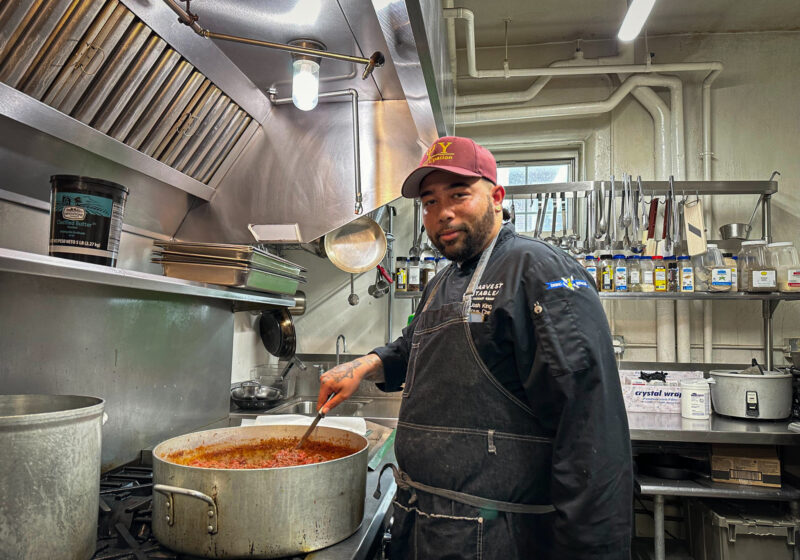With the whimsical tenor of a game show and the gravitas of a legal affairs program, Miller’s Court convened once again to discuss the biggest cases facing the highest court in the land.
Arthur Miller ’56 kicked off his namesake panel discussion on Oct. 14, an annual fixture of Meliora Weekend. The freewheeling symposium drew a full house in Strong Auditorium and featured a cast of five legal heavyweights.
After introductions, Miller — now a distinguished law professor at New York University — threw out the first pitch: How will the Court deal with the issue of extreme partisan redistricting?
On gerrymandering
On October 3, the Supreme Court heard arguments in Gill v. Whitford, a case about the constitutionality of partisan gerrymandering. The case originated in Wisconsin, where Republican state legislators in 2011 redrew state electoral maps to gain a significant party advantage. The GOP ultimately won 60 percent of the seats with less than half of the popular vote in the 2012 election.
“Depending on how it comes out,” Miller said, this case could be “the most important of the last six decades.”
The Court has previously ruled that racial and ethnic gerrymandering are unconstitutional. In a 2004 case, Vieth v. Jubelirer, the Court agreed that extreme partisan gerrymandering could also be unconstitutional, but didn’t settle on a standard by which it could be determined. The appellants in Gill hope to change that with a proposal called the “efficiency gap.”
The panelists agreed that the time was right for the Court to resolve the question.
“If they don’t do it here, they’ll never do it,” said John Sexton, the president emeritus of NYU and former dean of its law school.
Congresswoman Louise Slaughter, D-N.Y. — by her own account, “the only person here who has ever been gerrymandered” — referred to the Wisconsin case as “egregious.”
“I want computers to do it,” she added, referring to the districting process. “Someone who’s totally disinterested — a machine.”
Miller wondered: Is it the job of the courts to decide whether the process is too partisan?
“Yes,” Slaughter said firmly, to laughter.
She expressed hope that Justice Anthony Kennedy, often the Court’s swing vote on divided cases, would agree.
“If it’s not us, it can’t be anybody,” said Robert Sack ’60, a senior judge on the U.S. Court of Appeals for the Second Circuit.
Jeffrey Toobin, senior legal analyst for CNN and a staff writer for The New Yorker magazine, mentioned that he had been present for the arguments in Gill and was impressed with “how engaged the eight justices who speak were,” a jab at the famously taciturn Justice Clarence Thomas.
Kennedy, the journalist observed, hinted that Gill might also raise issues under the First Amendment.
Miller spoke about how courts often offer interpretive standards that are “vague as hell,” including “one person, one vote” and “with all deliberate speed,” the timetable for school desegregation that followed the 1954 Brown v. Board of Education decision.
“That’s why we give you lifetime tenure,” Miller said to Sack.
“I thought that’s because you recognized we couldn’t do anything else,” Sack retorted.
On wedding cakes and religious freedom
With what he referred to as “an only-in-America story,” Miller introduced the next case: Masterpiece Cakeshop v. Colorado Civil Rights Commission.
In the case, Miller explained, a gay couple living in Colorado sought a wedding cake from Masterpiece Cakeshop. The owner refused to bake the cake for them on religious freedom and freedom of expression grounds, and the couple sued under Colorado civil rights law. Now, the Supreme Court must decide whether the Constitution protects the baker’s right to deny the couple’s request.
“It’s the only Supreme Court brief I’ve ever read that devotes substantial attention to icing,” Toobin quipped.
He quickly drew a line between Masterpiece and a 1964 case, Heart of Atlanta Motel v. United States, in which the Court agreed that Congress possessed the power under the Commerce Clause to compel enforcement of civil rights legislation against private businesses.
The panelists all agreed that the current case would be more complicated than invoking a single precedent. Nevertheless, some of the panelists seemed sympathetic to the original plaintiffs.
“It’s the first time I thought Marie Antoinette might be right: Let them eat cake,” University President Joel Seligman said.
Members of the audience groaned.
How, Miller asked, does icing amount to speech?
“This isn’t ‘Moby Dick,’” he added.
Sexton, a scholar of religion and law, suggested that speech was actually a red herring.
“This is a religion case,” he said. “It is dressed up as a speech case.”
On speech, technology, and democracy
As the discussion shifted toward free speech, Sack, the author of several books about First Amendment issues, brought up the landmark 1964 New York Times v. Sullivan case, which established modern standards of liability for the press in cases of defamation.
Miller suggested that social media allows virtually anyone to be a publisher.
“Who is accountable?” he asked.
“Beats the hell outta me,” Sack replied.
Acknowledging the Court was behind on dealing with the influence of technology, Miller nonetheless noted that the Court’s opinions are “the only game in town.”
Sack asked, in response, “Do we need more judicial specialization? Or is that dangerous?”
Sexton described courts as “an extraordinary celebration of thought,” and, together with universities, as “institutions that stand as counterpoint” to ignorance. The judiciary, he suggested, is a necessary safeguard against threats to democracy.
“This is not new,” Seligman added. “Our democracy has always been fragile.”
On the Court in public opinion
Sexton lamented that the Court used to establish “moral authority” through unanimity and non-partisanship, but he seemed optimistic about its current trajectory.
The Court can’t avoid politics entirely, Toobin reminded the panel, especially as the ages of several justices draw speculation about their futures on the bench.
“84 is not the new anything,” he said in reference to Justice Ruth Bader Ginsburg’s age.
Slaughter, herself 88, said Ginsburg was as “strong as a horse” and anticipated that the justice would remain on the Court for at least a few more years.
Kennedy, who is 81, is also under scrutiny — but, Toobin added, “I’m not sure he’s going to be in a big hurry” to leave.
Some of the intrigue of the Court involves the relationships between its justices. Ginsburg and the late Justice Antonin Scalia, in particular, were described as having an unexpectedly close friendship, given how different their approaches to interpreting the Constitution were.
“They were friends,” Toobin said, rejecting the media “love affair” between the two.
The other justices generally get along, the panelists agreed.
One reason, Toobin said, is that former Chief Justice William Rehnquist set up a system in which the justices “left each other the hell alone.”
There are, of course, occasional rifts. Sexton gestured toward the Bush v. Gore case from 2000, a “deeply personalized decision” that alienated the Court.
In light of the discussion of the political and even personal vulnerabilities of the Court, Sexton echoed his previous comment: “Does the Court deserve the moral authority we give it?”
Seligman seemed to think so. However imperfect the systems may be, he said, they are self-regulating and, in a word, “glorious.”
“One person agrees,” Toobin said, as a lone audience member clapped.




